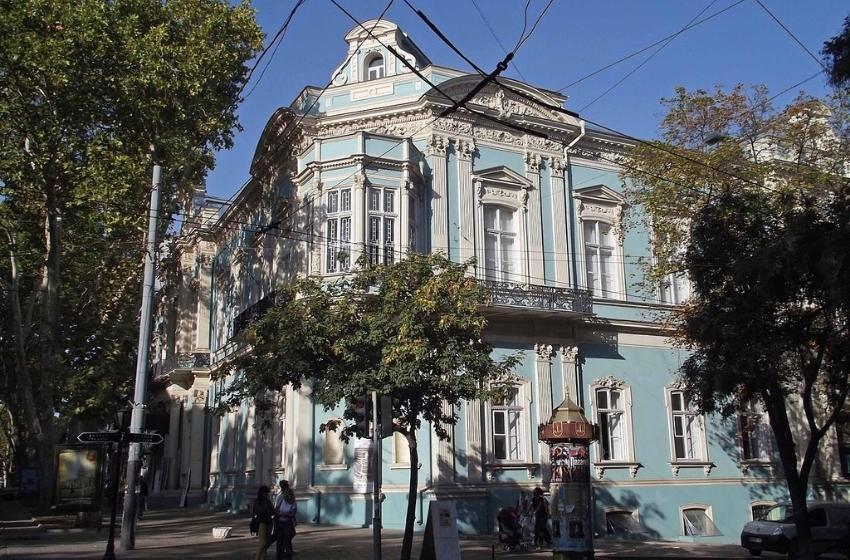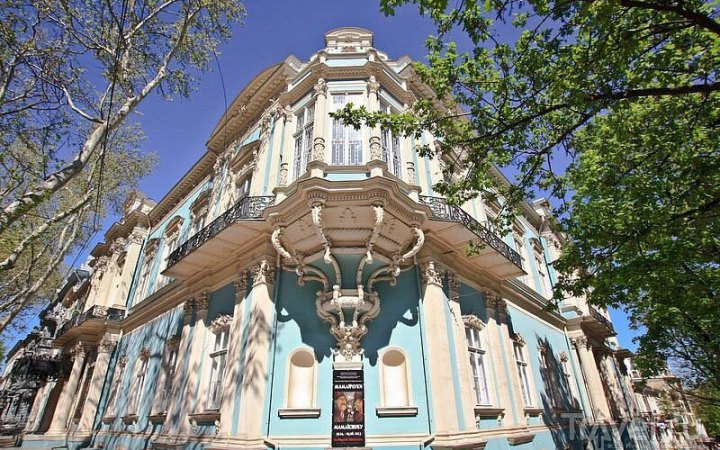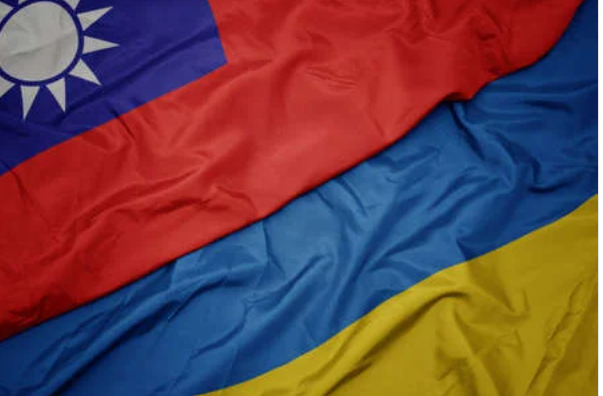Odessa Museum of Western and Eastern Art is one of three museums in Ukraine, whose collections represent exclusively the art of foreign Europe and the countries of the East. Collection contains a number of works that made the museum famous far beyond the borders of Ukraine.
The Museum is located in the former palace of Count Alexander Mikhailovich Abaza at the address: st. Pushkinskaya, 9. The Museum was founded in 1924 on the basis of the collections of the State Art Museum, the Odessa Museum of Red Arts, the Art History Cabinet of the Novorossiysk University and private collections. The Eastern section of the Museum was opened in 1951.
The building of the Odessa Museum of Western and Eastern Art is an architectural monument of the middle of the nineteenth century. It was built in 1856-58. designed by the famous architect Ludwig Otton, a graduate of the St. Petersburg Academy. According to the Odessa legend, the mentioned Otton worked on the construction of St. Isaac's Cathedral (1818-1858) under the leadership of Montferrand himself.
On the ground floor there is a department of antique casts, which is traditional for all European art museums, for it symbolizes the role of the ancient heritage for the entire European artistic culture. Nearby is the department of art of the peoples of the East Relatively small, occupying only three small rooms, it always attracts the liveliest attention of visitors. Its three halls are like different regions of the infinitely diverse East. Art of Iran (ancient Persia) - the Middle East, art of India, Mongolia and Tibet represent Central and Southeast Asia, and the third hall introduces you to the world of Japanese and Chinese culture.
The halls of the second floor are devoted to the exposition of European art: painting, sculpture, arts and crafts. The collection was replenished with valuable exhibits at the expense of receipts from the State Hermitage, Pushkin Museum, Kyiv Museum of Western and Eastern Art and other collections.
In this article we will describe top ten the most valuable exhibits of the museum. We strongly recommend to visit the museum in the nearest future and see everything with your own eyes.
1. "Madonna Enthroned" by Francesco Granacci, 1519. An Italian artist, he helped paint the Sistine Chapel, participated in the painting of the Florentine complex of San Marco, worked with Leonardo da Vinci, Michelangelo and Raphael.
2. "Behold the Man" by Bernardo Strozzi. At the age of 17 Bernardo Strozzi, named il Cappuccino and il Prete Genovese was an Italian Baroque painter and engraver. A canvas and fresco artist, his wide subject range included history, allegorical, genre and portrait paintings as well as still lifes.

Right: "Madonna Enthroned" by Francesco Granacci, 1519
3. "Evangelist Luke" by Frans Hals, 1623-1625. Frans Hals is one of the three leading Golden Age painters of Dutch art. He entered the history of world painting as a brilliant portrait painter, whose innovation was expressed in the ability to create dynamic images and convey the emotional state of his heroes.
4. "Evangelist Matthew" by Frans Hals, 1623-1625. Hals's paintings are a kind of visiting card of the Odessa Museum.
Unlike his contemporaries, the master avoided the brilliant texture and smooth application of paint in his works. He emphasized the details and endowed his heroes with vividness, thanks to visible strokes and large colour spots. This technique became popular only in the 19th century, especially among impressionists.

Right: "Evangelist Matthew" by Frans Hals, 1623-1625
5. "Portrait of Joseph Deribas" by Johann Baptist Lampi the Elder, 1796. The Austrian painter was a master of ceremonial portraiture, worked at the Russian court, where he painted portraits of famous people.
In 1791, he moved to St. Petersburg where the Empress gave him a hereditary knighthood. In Russia he devoted himself to portrait painting, and accumulated a large fortune. He painted the Empress Catherine II and Empress Maria Feodorovna (Sophie Dorothea of Württemberg) among others. He returned to Vienna in 1797 and became its honorary citizen in 1799.
6. "Saint Jerome" by Alessandro Magnasco. The legendary church writer also known as il Lissandrino, ascetic, translator of the Bible, is depicted by the Italian artist in an unconventional way - not in the way it was customary to portray Saints at that time.
His paintings are easily identified by his free, open brushwork and the tiny, flame-like figures that seem almost to be strewn across the canvas. Magnasco frequently left the priming coat visible under the paint to serve as part of the final colour scheme.

Right: "Saint Jerome" by Alessandro Magnasco
7. "The Apostle Peter" by Giovanni Francesco Barbieri. The real name of the Italian artist was Giovanni Francesco Barbieri, and he received the nickname Guercino ("Cross-eyed") for a slight visual defect.
8. "The youth in armor" by Pierre Mignard. The French artist worked at the court of Louis XIV and was rector of the Paris Academy of Painting and Sculpture.
9. "Portrait of the Duke de Richelieu" by Victor Hubert. For a long time, the author of this portrait was unknown. And only a few years ago Odessa restorers discovered on this work a signature belonging to a famous French artist.

Right: "Portrait of the Duke de Richelieu", Victor Hubert
10. "Haman and Mordecai" by Paul Alexander Leroy, 1884. The French artist studied at the Odessa Drawing School and was a member of the Association of South Russian Artists. He donated this painting to the museum in memory of his mother, who was born in Odessa.

1884





















